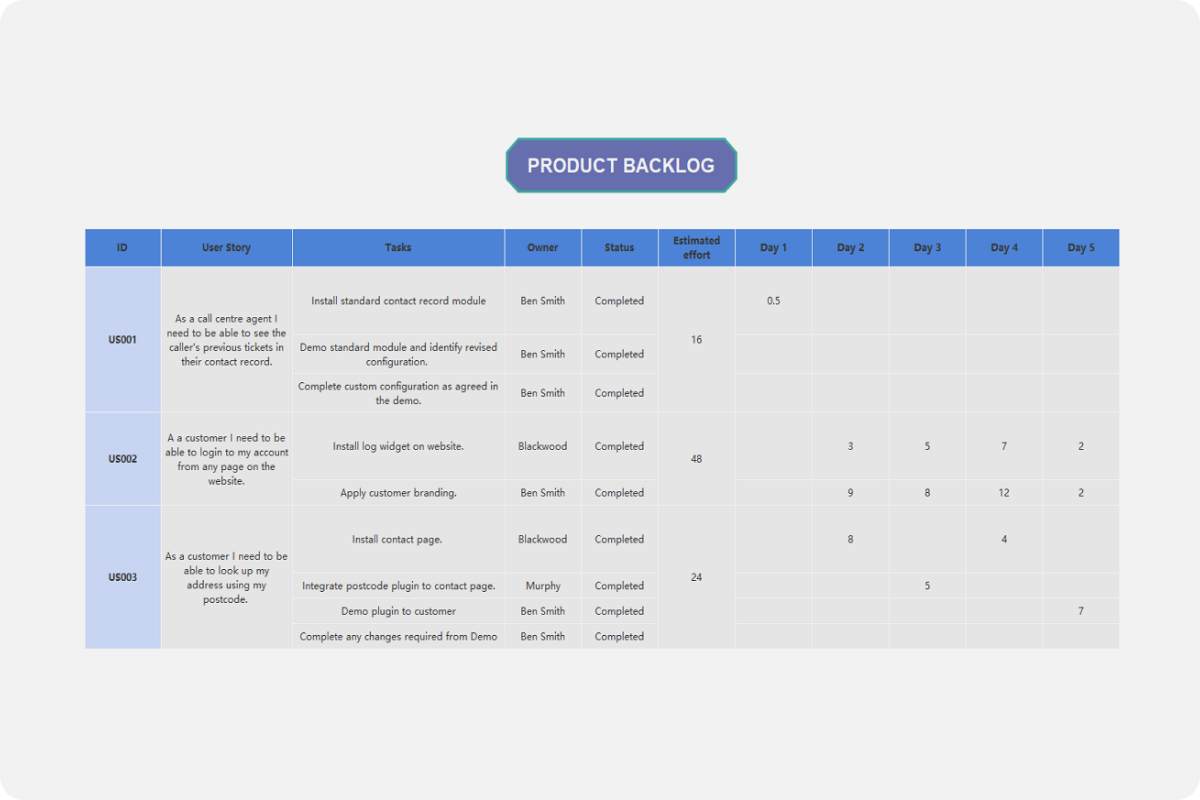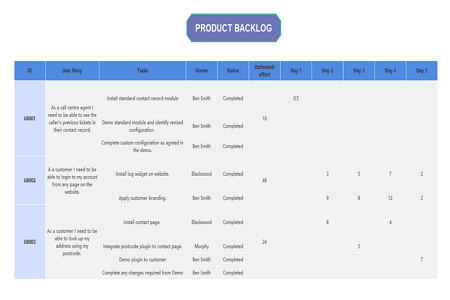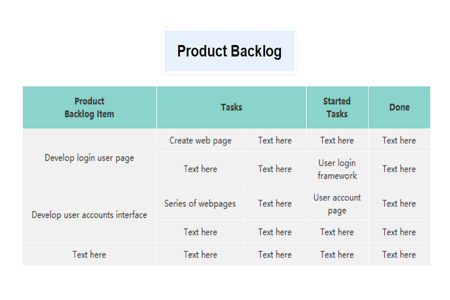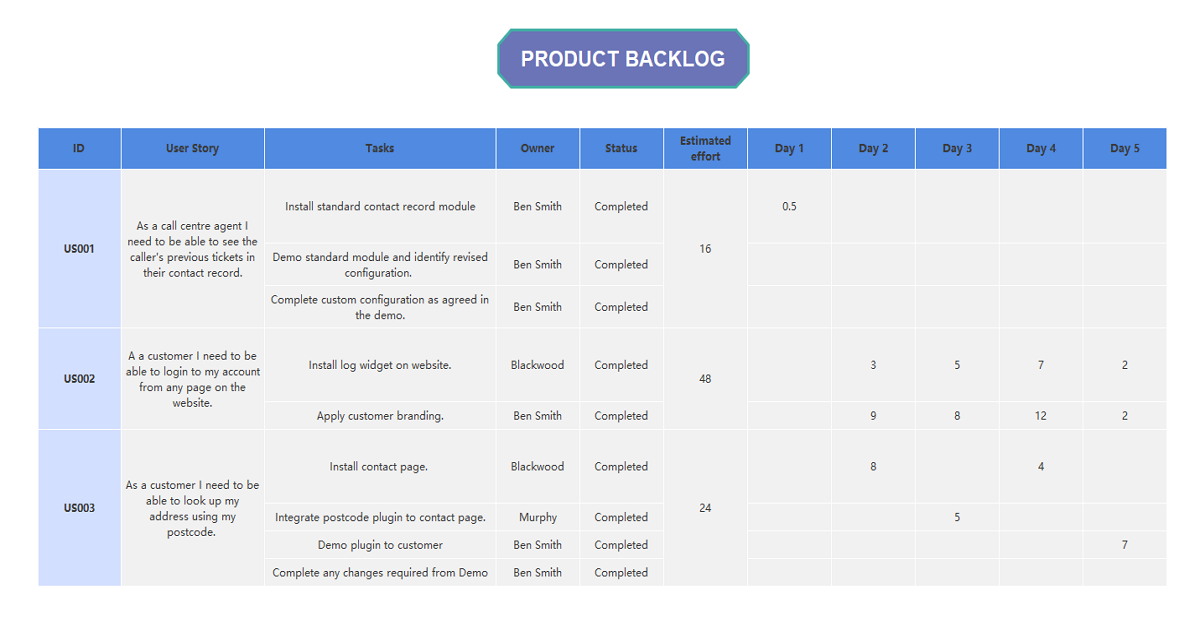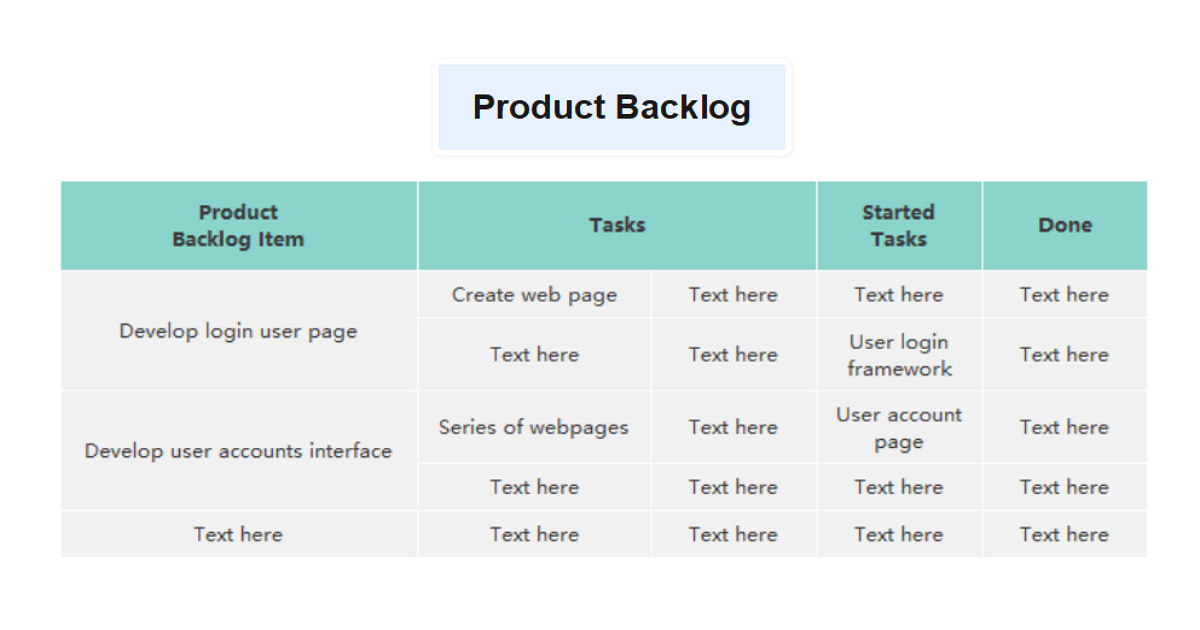About the Product Backlog Template
As products are developed and refined over time, maintaining a prioritized list of product requirements may become an enormous task if not done appropriately.
A product backlog is an ordered and running list of tasks, items, or features that needs to be completed as a part of a more extensive roadmap. A product backlog template can help your team keep up and monitor tasks. There is a general rule to have a single product backlog for every product created and an assigned unit for the specific backlog.
There are also multiple product backlogs with various teams working on a larger product. A product backlog comes from the product roadmap that explains properly the plan of action on how the product must evolve. Most developers actually use the tasks from the product backlog to achieve their desired outcomes as fast as possible.
Product development is a never-ending and ever-evolving process. As a result, your Scrum backlog template must keep up with the changes. A well-managed product backlog ensures your software projects will have concise priorities with a focused action plan.
Why should I use a product backlog?
A product backlog is an essential and specialized to-do list that helps break down projects and determine which tasks are the most significant. The product backlog aims to improve collaboration to achieve a team that runs like a well-oiled machine. It serves as a primary tool for communication and maintaining alignment on expectations and goals among team members.
Using a collaborative product backlog template will provide a high-level visual representation of all the work items involved in a specific project. The template will also help keep track of time development, and all the work is accounted for. Assigned members of the product backlog must also ensure that it is efficiently organized to make release and sprint planning easier.
How to create a product backlog?
A product backlog is more than just your work's to-do list. It is an instrument used to manage the complexities of tasks into a number of steps and assign them among team members accordingly. Consider the list below to ensure an active product backlog:
- The product roadmap must be one of the team's priorities when making a product backlog. You need to create a roadmap before the product backlog; the roadmap serves as your plan of action for how a product changes as it develops.
- After the product roadmap, your team can now start listing items for the product backlog. These include more abstract ideas and high-priority items. There must be communication with stakeholders and getting some ideas for the improvements of the product.
- When all the listing for the product backlog items is done, your team can now classify them and effectively prioritize which tasks are of higher significance. You can identify items with higher priority by considering what items yield the most value to your target customers.
- Treat the product backlog as a living document, as your team members continuously work through it. You need to update it regularly, add items to the backlog as well as prioritize or refine items when working through them.
Product backlog prioritization
Prioritizing tasks is an essential aspect of managing the product backlog efficiently. You need to have a better understanding of the new features stakeholders actually want to have in the product. Below are some techniques in prioritizing backlog list items:
- Discuss complex tasks first. Surely, finishing up the simpler task first to shorten the list and remove them from the product backlog can be easier, but it can yield low efficiency in project management. The product will just continue to grow. It is best to deal with the more complex task first before the easier ones.
- Accomplish each task in focused sprints of time. Agile teams involve five to eleven cross-functional individuals who build, define, test, and deliver value increments in a short time. These teams focus on sprints of time to accomplish the job. This method is highly efficient for productivity. After each sprint, the owner and stakeholders can effectively attend a sprint review with the development team to ensure that all systems are on track.
- Communicate among team members. Communication is a vital part of product backlog prioritization. Team members must constantly communicate with each other while following the Scrum backlog template. This is to ensure success in sorting through the backlog and completing items in a reasonable timeline.
Product refinement
Remember that your product backlog must function as a living document. And to maintain this, product owners or project developers must ensure to manage the product backlog with the program consistently. There has to be a constant review before every iteration planning meeting to keep the alignment on prioritization.
This process is generally called backlog refinement. Others also call this backlog grooming which is crucial to the success of the product built.
Product Backlog Examples
Product backlog varies between projects but most start with an epic. An epic serves as an overarching issue you are trying to solve for a customer. Check out the example below.
Epic: As an online news manager, I really want a content management system to provide current news articles to the readers.
This epic could lead to several product features, ranging from how users can create content in the system to how they edit and share the content with the teams. To continue, you can divide the epic into more specified user stories.
Story 1: As a news content writer, I prefer a content management system which lets me write news articles to inform the readers of current events.
Story 2: As a content editor, I really want a content management system that allows me to review all content before publishing to ensure it is accurate, well written, and search optimized.
The team will then identify the product's features from the user stories as well as prioritize them based on significance.
Example features the product must have for Story 1:
- Content management system login
- Create content
- Edit page/s of the content
- Save all changes
- Assign a content editor for review
Example Product Backlog template 1
Why EdrawMind?
EdrawMind is a full-featured collaborative mind mapping and brainstorming tool. It is convenient and helpful for you to use EdrawMind to sort out your thoughts, visualize ideas, take notes, plan projects and more importantly, find solutions to problems.
Users are allowed to insert different kinds of objects into topics and mind maps in EdrawMind, including relationship line, boundary, callout, summary, mark, clip art, picture, hyperlink, attachment, note, comment, and tag. EdrawMind offers you a simple way to create mind maps on Windows, macOS, and Linux. Download the desktop version and try the free online version now!
22 structures & 47 themes & 750+
cliparts
Support Win, Mac, Linux, Android, iOS
Advanced import & export options
On-premises software for business
Enterprise-level data security
12 structures & 33 themes & 700+
cliparts
Access diagrams anywhere, anytime
Templates Gallery
Team management & Project management
Real-time Collaboration
